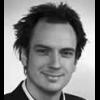Day 1:
Opening: The organisers connected the conference to the legacy of the prior SENS conferences in Cambridge.
With 500 attendees, this one is the largest so far.
Barzilai, the opening keynote speaker, explained that the TAME trial was delayed because an NIA reviewer did not support the study. With alternative funding the trial "should start this year"
Session 1:
Reason introduced his new venture. After all the year in relative seclusion it is wonderful to see him step onto a stage 
Moskaleve & Parkhitko both sought to make the case that fruitflies are still useful in intervention-focused geroscience.
Breitenbach-Koller derived insights from protein sythesis in yeast that she hopes to adopt for customised protein synthesis. I missed any achievements since the initial paper in 2013. She mentioned having formed a company which I also can't find straight away. .
Session 2: Cells in circulation
Pawelec gave a nice overview of basic aspects of immune aging (watch the video if one goes online), but no new data (although he mentioned that age seems to have no effect on monocytic myeloid-derived suppressor cells=
Nikolich-Zugich. stressed the importance of "lypmh node fibrosis" in impairing thymus function and regeneration.He has results in primates and humans supporting that. I'm sure Reason listened carefully.
Lambracht-Washington presented data on immunotherapy vs. Alzheimer's. She acknowledged that all such trials focusing on amyloid have failed but argued that using a DNA AB42 was different. It does affect AD- like pathology in mice, rabbits and monkeys but it seems very early days. If they get an NIA grant this year, they will try to get a GMP vaccine and more preclinical data and aim for a 16 patient trial in year 2.
Session 3: Extracellular molecules
McClure: Argued for the superiority of their biomimic 'peptoids' over peptides and presented plans to use them as an antimicrobic in the ear. More ambitiously, he argued that some types of dementia are infection-related and hopes to use their technology in this context - but presented only flimsy in-house evidence.
Mata: presented some nifty tools for bio-engineering enamel, with much greater ambitions, but rather failed to demonstrate relevance to the the conference topic
Debate:
The day concluded with a debate between Vadim Gladyshev and Aubrey de Grey on "is comprehensive damage repair feasible?" A strange topic as the main interest of most attendees would seem to be "can damage repair be good enough to retard aging significantly?" On this both speakers seemed to agree. But it was nice to hear Aubrey list his current "reasons for optimism" amongst which he listed the unexpected "penunmbra" and "knock-on" effects of interventions that are already working. Unfortunately, the same goes for the "penumbra" of frailty that comes with the factors that have not yet been 'fixed'
Networking:
Great to reconnect with longecity members, and community luminaries, as well as encountering new scientific and policy perspectives. What is always neat with these conferences is the eclectic crowd. Scientists and clinicians mingle with managers, advocates, investors, journalists and other well informed 'lay' stakeholders. Hoping to gather plenty of feedback for our current planning exercise.
 UndoingAging2019c.png 57.04KB
1 downloads
UndoingAging2019c.png 57.04KB
1 downloads














































